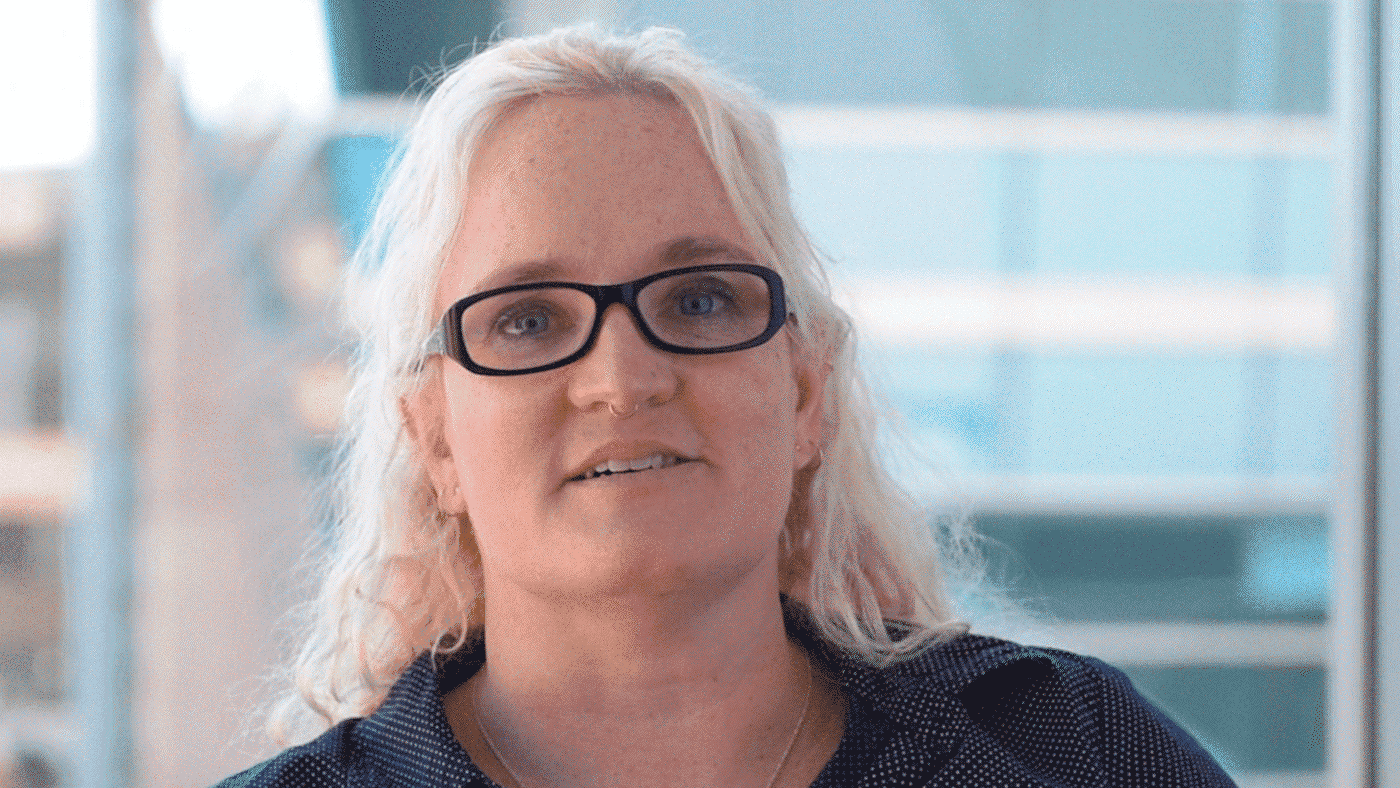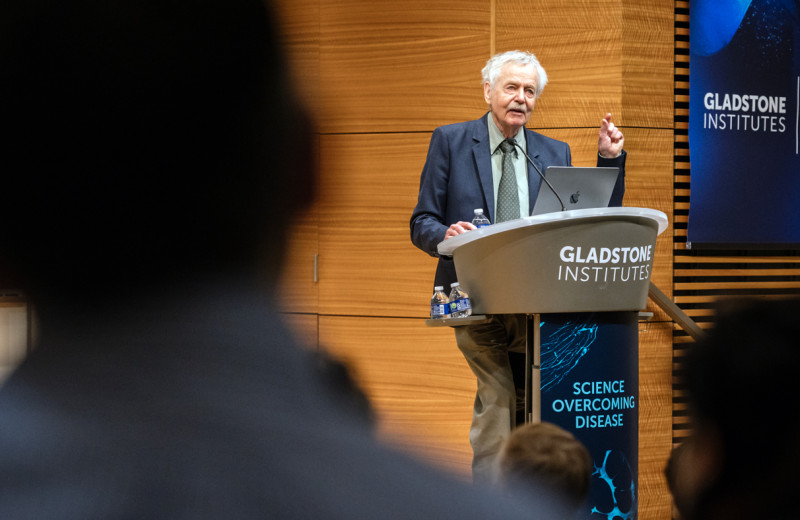Gladstone NOW: The Campaign Join Us on the Journey✕

As a career technician, Jane Srivastava is passionate about bringing recognition and support to those working in a scientific technical career.
Originally from Christchurch, New Zealand, Jane Srivastava (she/her) completed her undergraduate studies in plant and microbial biology at the University of Canterbury. She worked as a lab technician before discovering flow cytometry in 2003 and has been in the industry ever since, working as a flow lab manager at Imperial College London and designing practical and theoretical flow courses for undergraduate and postgraduate students.
Now at Gladstone, Srivastava is the director of the Flow Cytometry Core and has been a mentor for Gladstone’s PUMAS summer internship program.
What brought you to Gladstone?
I lived in London with my family for many years. For many reasons, we had decided that we wanted to leave and move closer to my native New Zealand.
However, my husband showed me the advertisement for the job at Gladstone and convinced me how great the San Francisco Bay Area was, since he had visited many times with work. I applied and after a whirlwind process—here I am!
What do you like about Gladstone?
I’ve worked for a large academic institution and I kind of felt like a cog in a wheel. Gladstone feels much more like a close-knit community and people are very friendly.
The quality of research at Gladstone is also fantastic.
Were you interested in science as a child?
I loved science as a child! There was obviously no internet at the time, so I used to scour the library racks at school for interesting science books. I also used to do little science projects on my own, usually about space—and although my sister reveled in calling me a nerd, I was proud of them.
What did your path to science look like?
I didn’t go to graduate school, although I’ve done some postgraduate study in education. Once I left undergraduate school, I worked as a lab technician for a couple of years before applying for a job that was part-time lab technician and part-time flow cytometry operator. I immediately loved flow—I got to play with machines (in those days, it was a mix of luck and magic to get the cytometer to work), and also do some teaching, and help people do great science.
Although I had opportunities to go back to graduate school, I realized that I was a much better technician. If I look back on the history of my family, we are all technicians of some sort or another, so I think it is probably a part of my DNA.
What is flow cytometry?
Flow cytometry uses lasers and fluorescence to detect extra and intracellular markers and various functions on and in a cell. It’s closely related to microscopy in that they both use similar components such as objective lenses, filters, and laser excitation, however in flow cytometry, the cells are flowing in a stream of liquid and thousands of cells can be analyzed per second. Although it started as a specialized field in immunology, the advent of many other techniques, probes, and technologies now means that it has relevance in many scientific disciplines.
Can you describe your current research project?
We currently have a collaboration with the Stem Cell Core at Gladstone to identify flow cytometry cell surface markers of human induced pluripotent cells. We are looking for markers on the surface of the stem cells that have been described by scientific literature so that we can then help with the quality control of samples coming into the Stem Cell Core. These cells are then reprogrammed to other cell types, such as cardiomyocytes or neurons, and passed to the researchers at Gladstone to do further work on them.
How has the pandemic changed your work?
For the flow core, our workload definitely decreased because of the pandemic, and training people was often hard since we had to be physically distanced and in full personal protective equipment. It did give us an opportunity though to examine and improve the kinds of training and resources we provide to scientists.
It has also given me a chance to reach out to the wider flow community both in the Bay Area and nationally—the Gladstone flow core has recently joined forces with flow cores at UC San Francisco to focus on flow-related training and common issues that arise and to try and find a solution together.
What or who influenced your decision to work in science?
A lot of my decision to work in science was influenced by my mother. She always wanted to be a scientist but never had the opportunity to go to university, and therefore encouraged and supported me to go.
During my first year at undergraduate school, I was not sure if I made the correct decision. However, I had a great biology teacher who would do things like distribute sweets amongst the class and then, as we were chewing away, would put up pictures of tooth decay on the projector and chat about that. I realized that science could be made interesting if the right teacher was in charge.
What interests you about joining the community groups at Gladstone? What changes do you hope to see?
I’ve joined the Women’s Initiative group. During my career, I’ve definitely faced discrimination because I’m a woman, and so if I can support other women in science in any way, that’s great. I feel like Gladstone is fantastic at supporting women in research and provides opportunities for development that I’ve not seen in my previous workplaces.
I also am involved with the research associate and technologist community. I like to get on my soapbox about being a career technician and feel like there needs to be a more formalized acknowledgement of a scientific technical career in the global science industry.
Individual organizations seem to be doing their part, but I feel it needs to be a step-change within the whole of science. Technicians have a large breadth of knowledge that comes from not only study but plenty of hands-on experience, and it would be good to have a recognized structure to support technical careers.
What do you do when you’re not working?
I spend time with my kids, exercise, and listen to a lot of music—anything from heavy metal to classical. If you see me around Gladstone with my headphones in, don’t be surprised!
Have you developed any fun pandemic hobbies?
Trying to cook decent Mediterranean food and hiking—although shifting to California has brought out a fear of wildlife such as coyotes, rattlesnakes, mountain lions, and tarantulas that I never knew I had.
If you could learn to do anything, what would it be?
To either play the cello or learn to surf. I’ve been to Pacifica, California, a few times with my eldest son but I think I need lessons as I’m usually slam-dunked by many waves.
What is your hidden or unique talent?
I play a pretty mean game of cards and if I’m shown how to play something, I can usually beat most people within a few rounds. I have a great poker face apparently.
Oh, and I can parallel park like a dream.
If you could meet any scientist from any point in time, who would it be and why?
Definitely Rosalind Franklin—I went to a play in London about her life and it was amazing. It really is so tragic that she lost her life so young. I would love to talk with her about her work, motivation, and how she coped in such a male-dominated work environment. I would also love to know her feelings about Watson and Crick!
If your research could be introduced to students in middle or elementary school, what would you want them to learn?
That lasers are not only cool because they can be used as lightsabers to defeat stormtroopers on the Death Star, but they can also be used to look at the microscopic cells in your body and find out what they are, and what they are doing.
Want to Join the Team?
Our people are our most important asset. We offer a wide array of career opportunities both in our administrative offices and in our labs.
Explore CareersA Sculptor of Modern Regenerative Medicine
A Sculptor of Modern Regenerative Medicine
Among his myriad accomplishments, Rudolf Jaenisch—winner of the 2025 Ogawa-Yamanaka Stem Cell Prize—was the first to demonstrate the potential of induced pluripotent stem cells to treat disease.
Awards Ogawa Stem Cell Prize Profile Regenerative Medicine Stem Cells/iPSCsMeet Gladstone: Shijie Wang
Meet Gladstone: Shijie Wang
Shijie Wang, a postdoctoral scholar in Steve Finkbeiner’s lab, uses artificial intelligence, robotics, and stem cell technologies to uncover how brain cells die in neurodegenerative diseases like Alzheimer’s and Parkinson’s.
Profile Neurological Disease Finkbeiner Lab AI Robotic MicroscopyMeet Gladstone: Oscar Yip
Meet Gladstone: Oscar Yip
Oscar Yip is advancing Alzheimer’s research in Yadong Huang’s lab at Gladstone while drawing inspiration from his family, community, and his broader goal of helping patients.
Graduate Students and Postdocs Profile Alzheimer’s Disease



